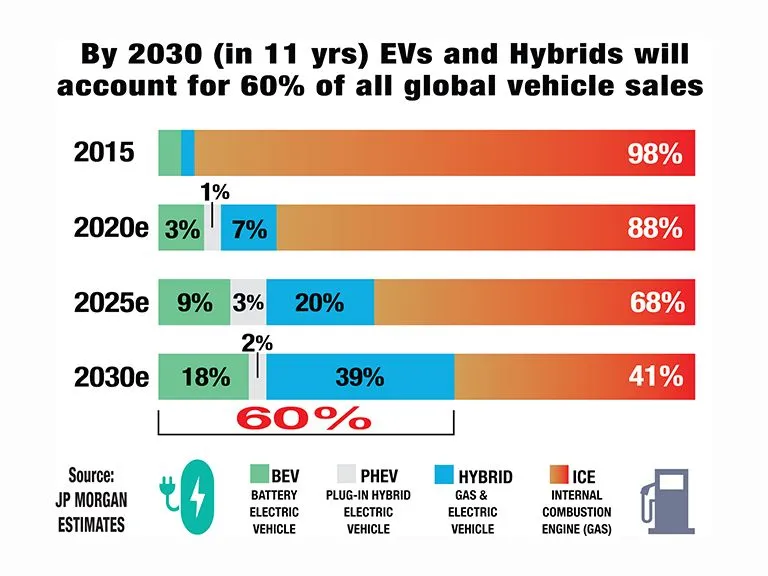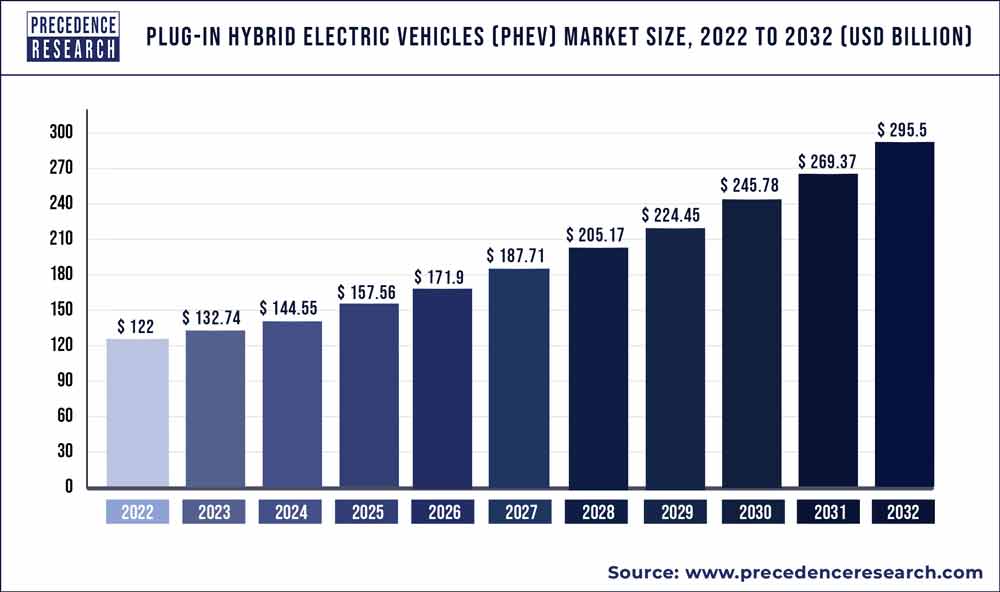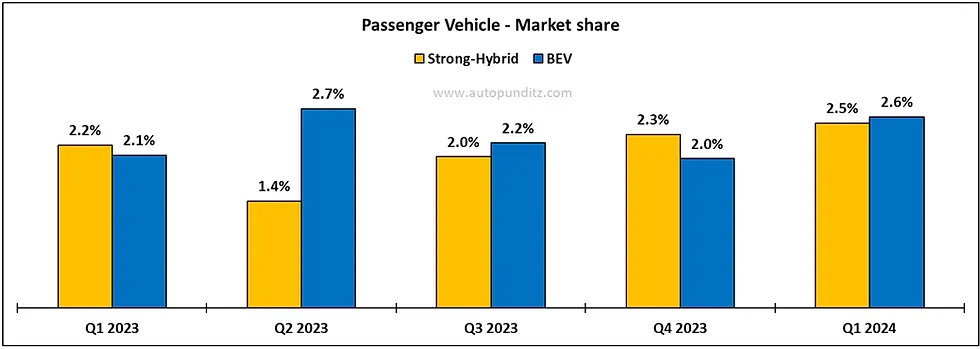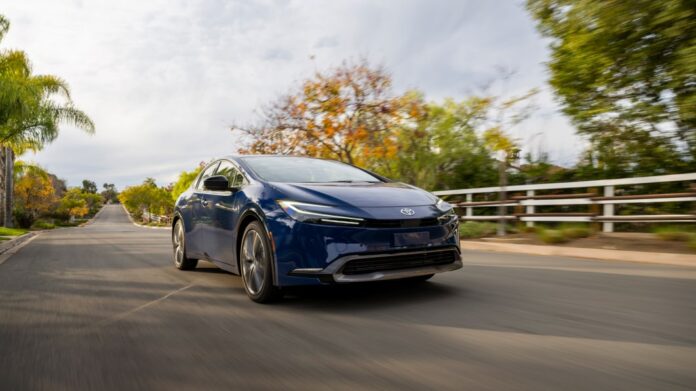The American market for hybrid cars reached a turning point in 2023. The automotive industry is changing dramatically. The most recent statistics from the U.S. Department of Energy shows that sales of hybrid electric vehicles (HEVs) soared by an astounding 53% from 2022 to close to 1.2 million units. This increase not only marks a significant turning point, but it also highlights a general trend in consumer preferences towards greener and more fuel-efficient modes of transportation. This article explores the causes of this boom, the effects on the auto industry, and the prospects for electric and hybrid cars in the future.

The Increase in Hybrid Cars
The hybrid automobile, including an electric motor driven by batteries and a petrol engine, has gained significant traction since it consumes less fuel and produces fewer pollutants than its conventional internal combustion engine (ICE) counterpart. The sales numbers provide a gripping account of this increase:
| Year | Number of Hybrid Cars Sold |
| 2023 | 1,175,597 |
| 2022 | 766,412 |
| 2021 | 799,046 |
| 2020 | 455,067 |
| 2019 | 399,444 |
| 2018 | 338,149 |
| 2017 | 370,680 |
| 2016 | 346,949 |
| 2015 | 384,400 |
| 2014 | 452,172 |
Also Read :- Mahindra’s $1.44 Billion Investment to Drive EV and Hybrid Advancements
Why Consumers Are Preferring Hybrid Vehicles
The growing appeal of hybrids can be attributed to several important factors:
- Fuel Economy: This type of vehicles have much higher fuel economy, frequently exceeding 60 miles per gallon. This results in significant gasoline cost reductions, particularly given the ongoing volatility of petrol prices.
- Lower Emissions: Compared to ICE-only cars, these produce less pollutants, which lessens driving’s total environmental effect. Customers that are growing more ecologically sensitive are starting to take this more seriously.
- Cost-Effectiveness: Hybrids provide a more convenient and economical option to fully electric cars (EVs), which sometimes have higher initial costs and raise questions about the infrastructure needed for charging. Since they don’t only rely on charging stations, many drivers no longer have range anxiety.
- Technological Developments: These days, this type of cars are more dependable and efficient thanks to recent developments in the field. Regenerative braking technologies and upgraded batteries both recover and repurpose energy that would have otherwise been wasted, increasing their efficiency even more.

Automakers React to the Demand for Hybrids
The automobile sector is modifying its tactics in response to the growing demand for this type of vehicles. Prominent instances include of:
- Ford: Due to the increasing demand for this kind of vehicles, Ford has chosen to increase the number of hybrid models it offers while postponing the delivery of some planned electric vehicles. By making this strategy change, the company hopes to meet present market demands and expand its line of electric vehicles.
- General Motors (GM): In response to persistent consumer demand, GM has stated that it intends to bring plug-in hybrids back by 2027. CEO Mary Barra demonstrated GM’s adaptability in satisfying customer demands by underlining the company will continue to produce plug-in hybrid vehicles as long as there is a market for them.
The Automotive Market’s Wider Effect
There are important ramifications for the automotive industry and other sectors beyond the rise of this kind of vehicles:
Fuel Utilisation and Output
The growing number of these vehicles on the road helps to lower total fuel consumption and greenhouse gas emissions. Hybrids aid in bridging the gap in the shift to more environmentally friendly transportation by providing a useful substitute for both conventional gasoline-powered automobiles and completely electric vehicles.
Purchaser Conduct
The move towards this kind of vehicles is a reflection of shifting consumer habits. Consumers are prioritising reduced emissions and fuel efficiency, even if it means choosing a technology that still uses some fossil fuels. This pattern suggests a rising dedication to and knowledge of environmental sustainability.
Innovation in Technology
Innovation in automotive technology is also being propelled by the increase in sales of such vehicles. In an effort to improve hybrid systems, lengthen battery life, and boost overall vehicle economy, automakers are spending money on R&D. These developments help hybrid cars as well as open the door for future progress in completely electric cars.
The Future for EVs and Hybrids
Even if hybrid vehicles are now seeing a boom in popularity, automotive technology will continue to evolve in the future. In the upcoming years, a number of things will affect how hybrids and electric vehicles develop:
Infrastructure for Charging
The creation of a reliable infrastructure for charging electric vehicles is one of the primary obstacles to their widespread acceptance. The convenience of EVs is anticipated to increase as public and private sectors invest in growing charging networks, which may further sway customer preferences in favour of fully electric vehicles.
Environment Regulation
Government rules and laws are very important in determining how the car industry develops. The adoption of hybrid and electric vehicles (EVs) is expected to accelerate due to upcoming federal tailpipe emissions regulations and state obligations targeted at lowering carbon emissions. These rules could also spur innovation in hybrid technology, increasing its efficiency and market appeal.

Market Rivalry
The rivalry between electric and hybrid cars will keep changing. In order to accommodate differing consumer wants and tastes, automakers are likely to provide a wide range of alternatives. The relative merits of hybrids and electric vehicles (EVs) will vary depending on factors including pricing, customer readiness for a full switch to electric mobility, and technical improvements.
Conclusion
To sum up,the sales of hybrid electric vehicles increased by 53% in 2023, indicating a dramatic change in customer choices and market dynamics. With their appealing mix of financial savings, reduced emissions, and fuel economy, hybrids are a popular choice among drivers. Hybrids are positioned to be a key component of the shift to more environmentally friendly modes of transportation as long as the automobile industry keeps innovating and adjusting to shifting consumer needs.
Disclaimer: The information provided in this article is based on available sources and may not be 100% accurate.

